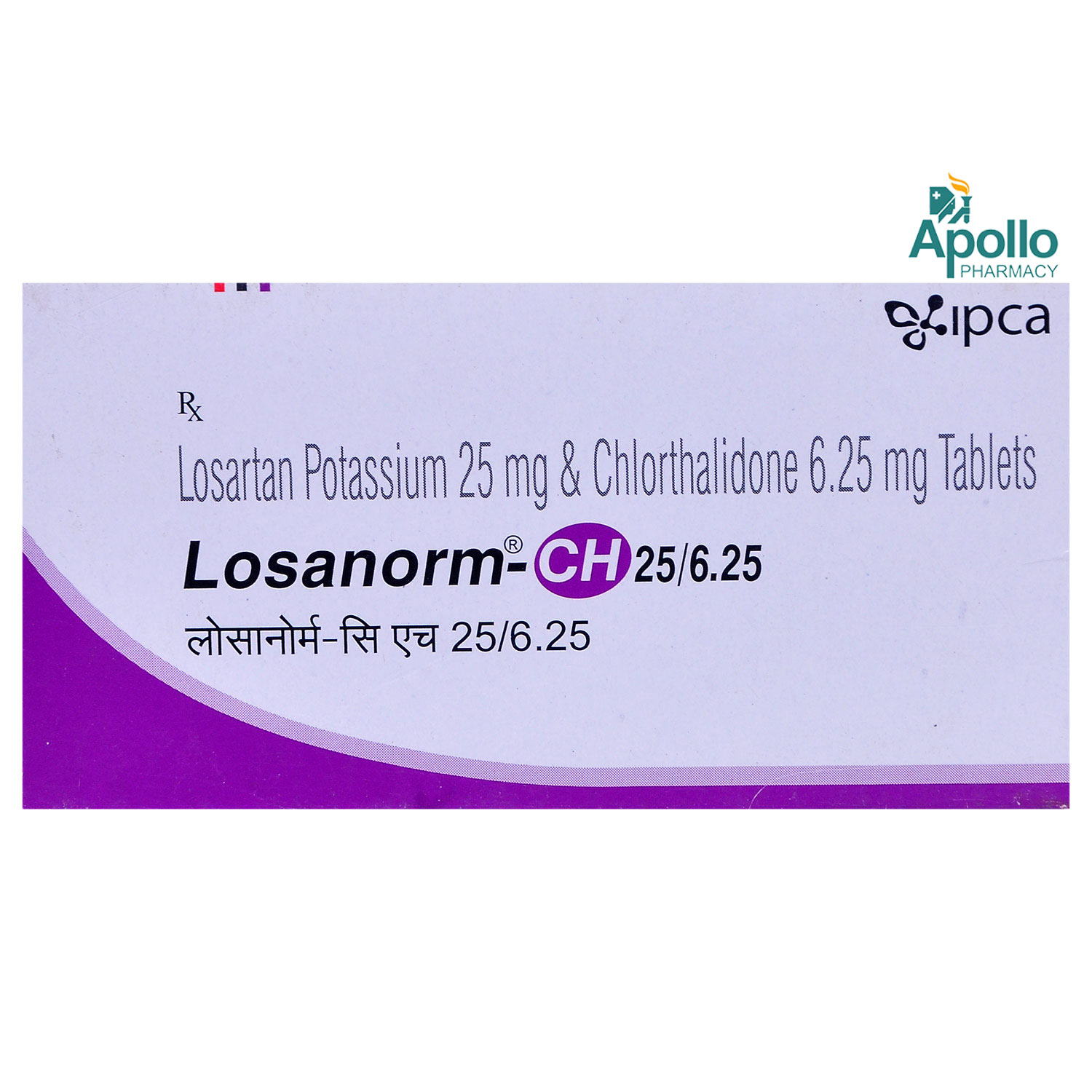CTD-L Tablet
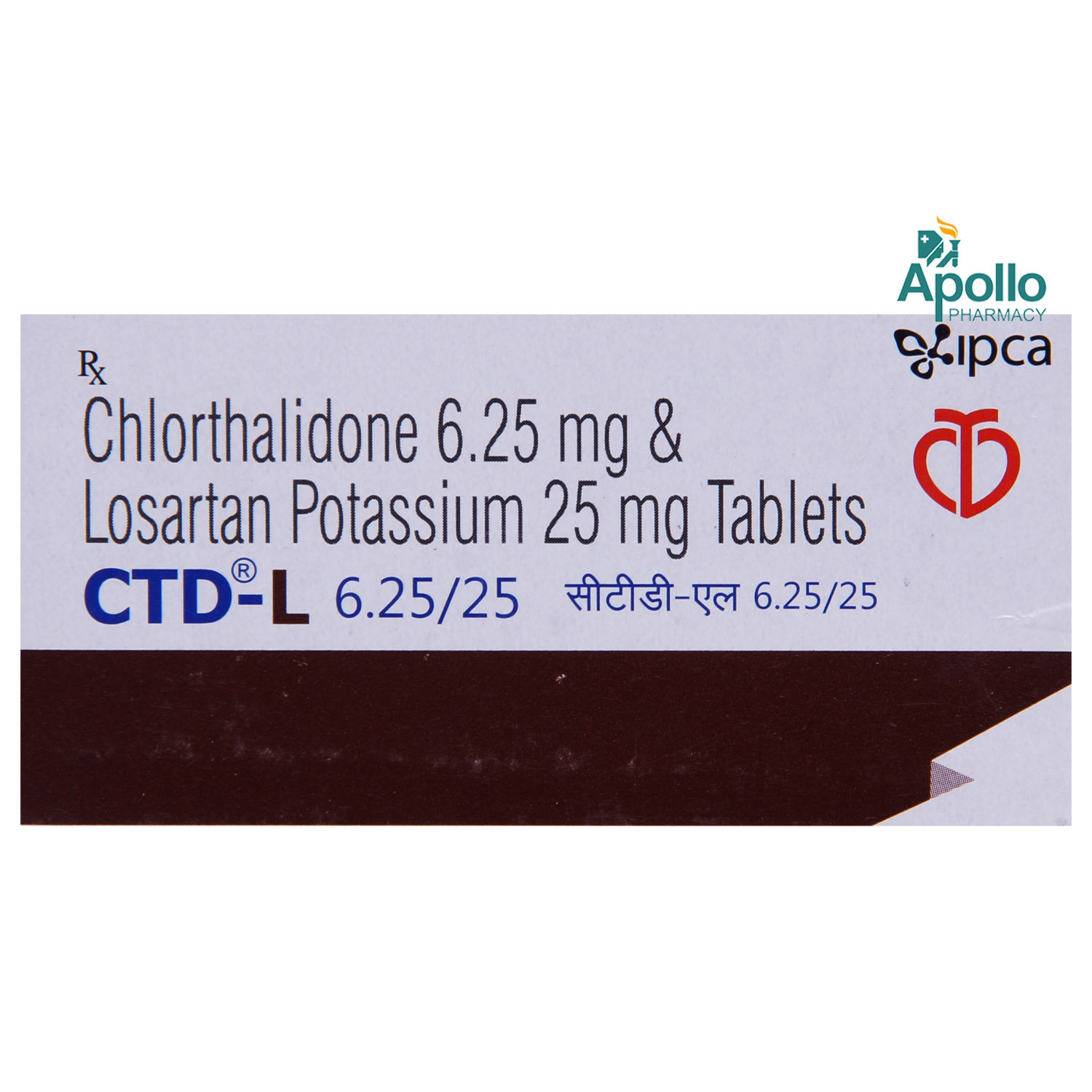
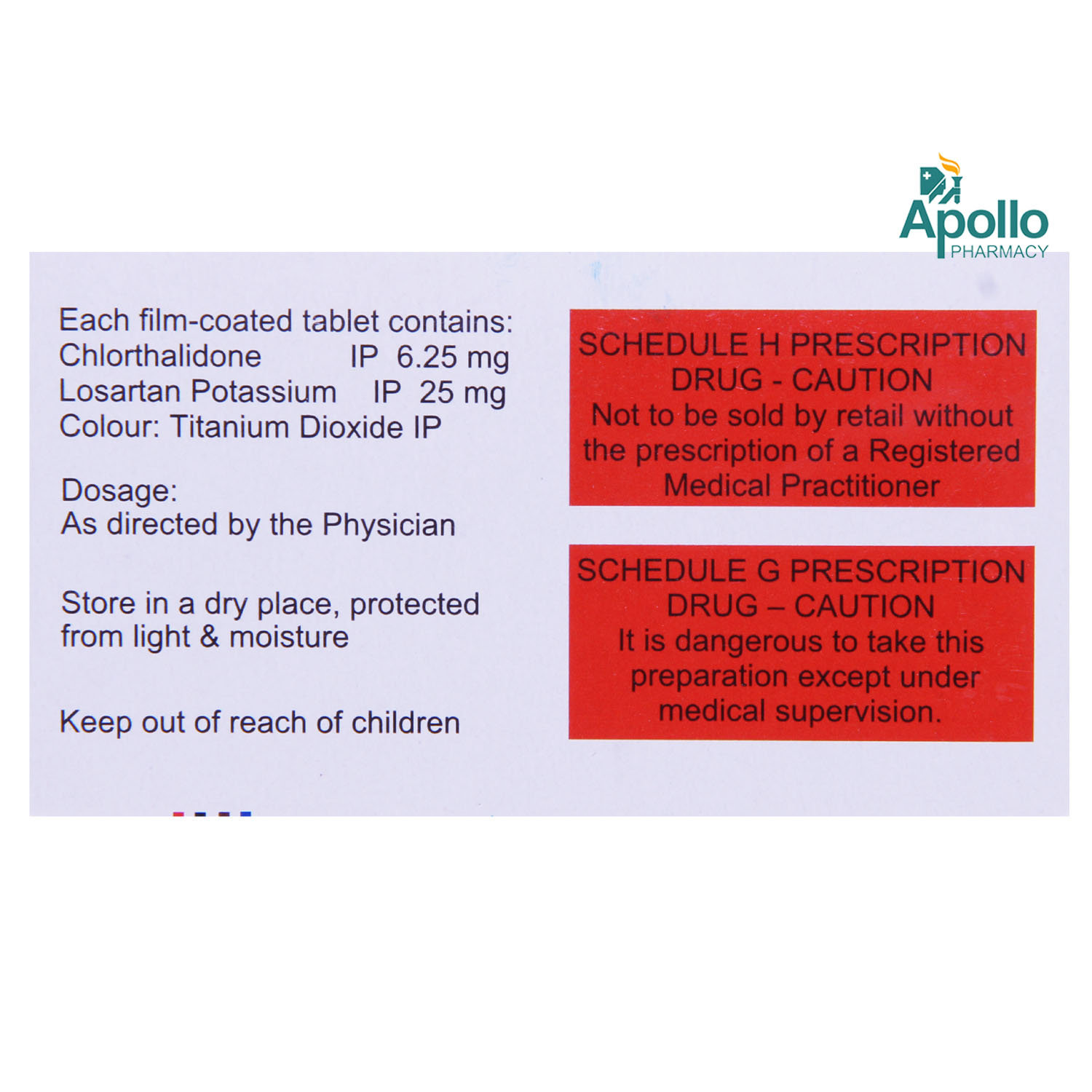
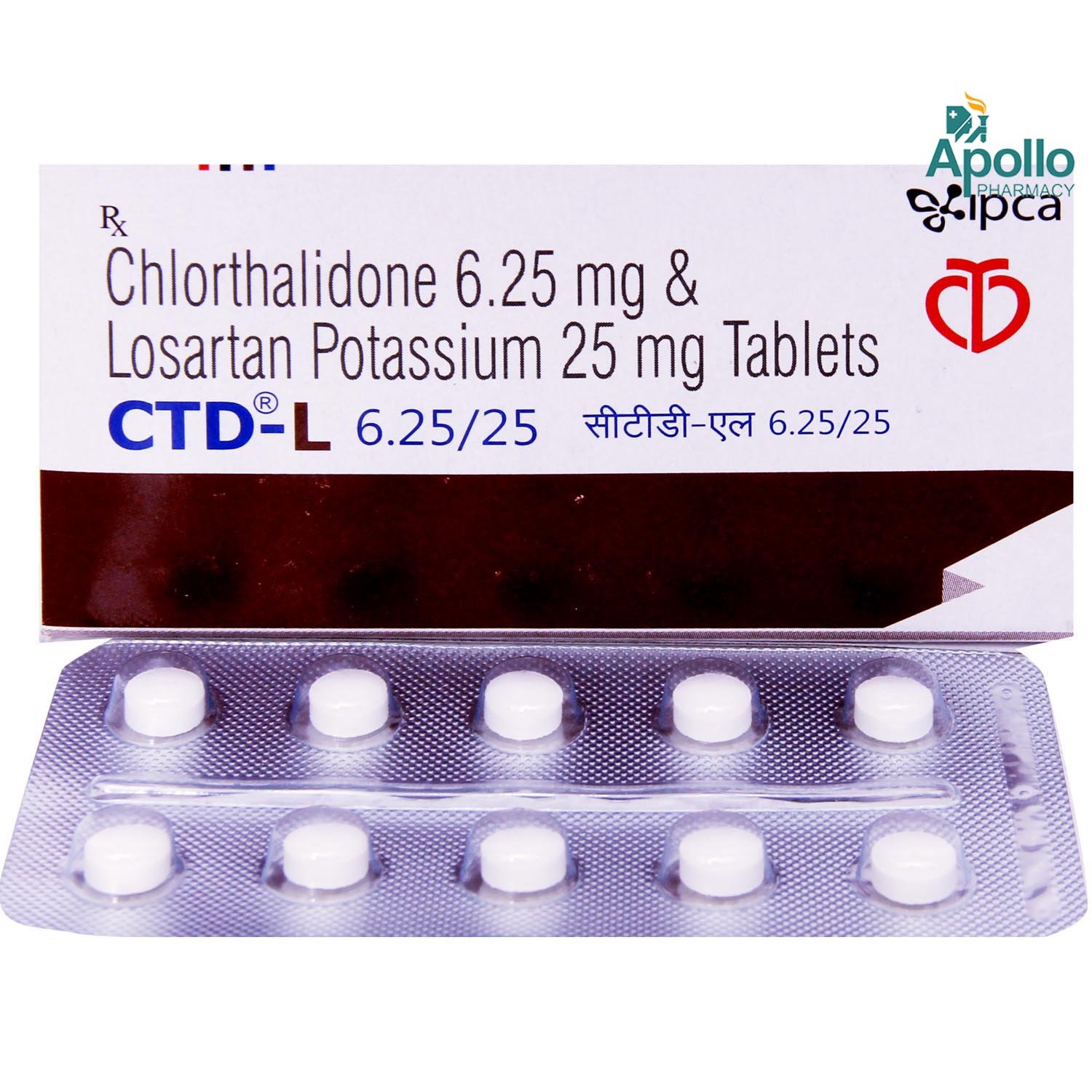
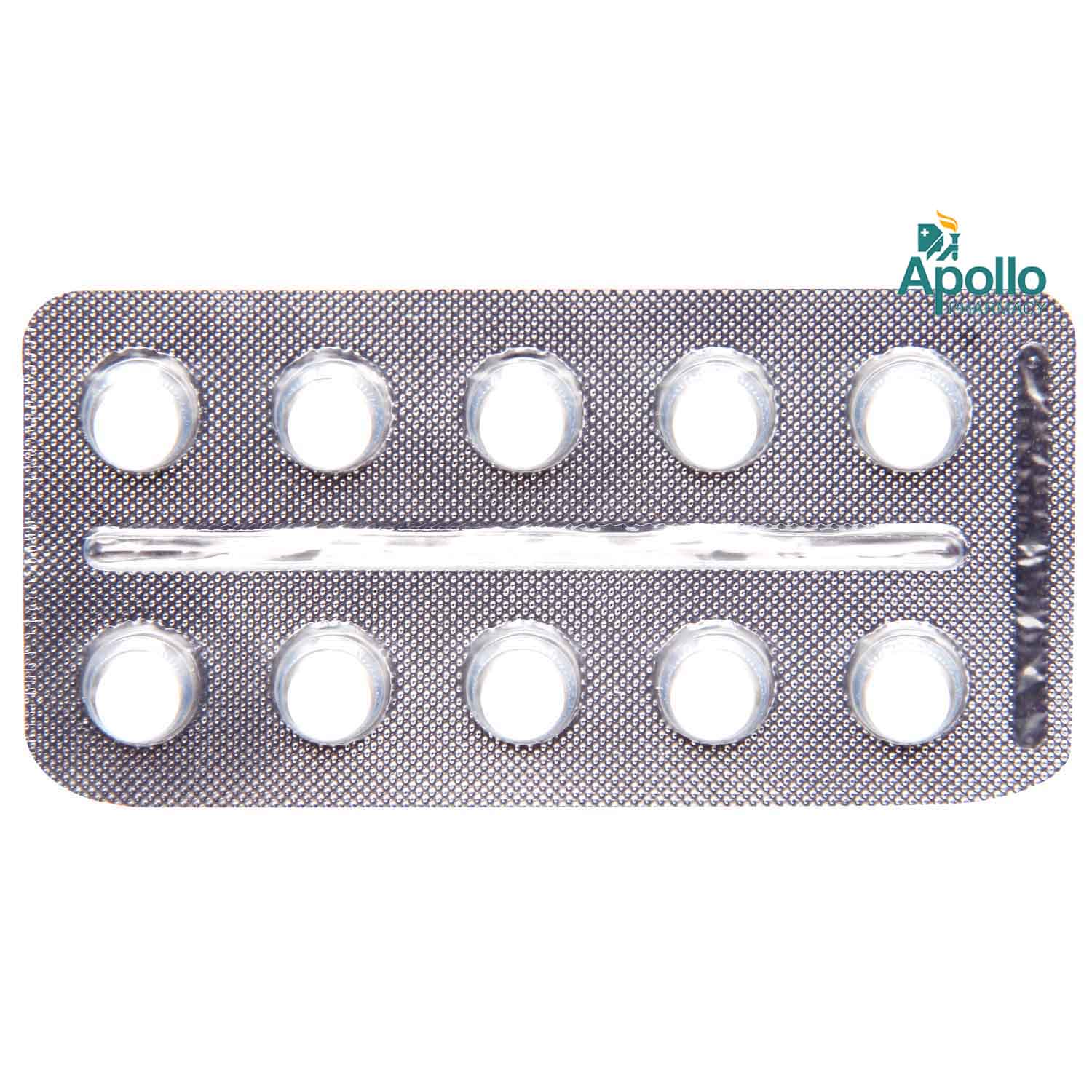
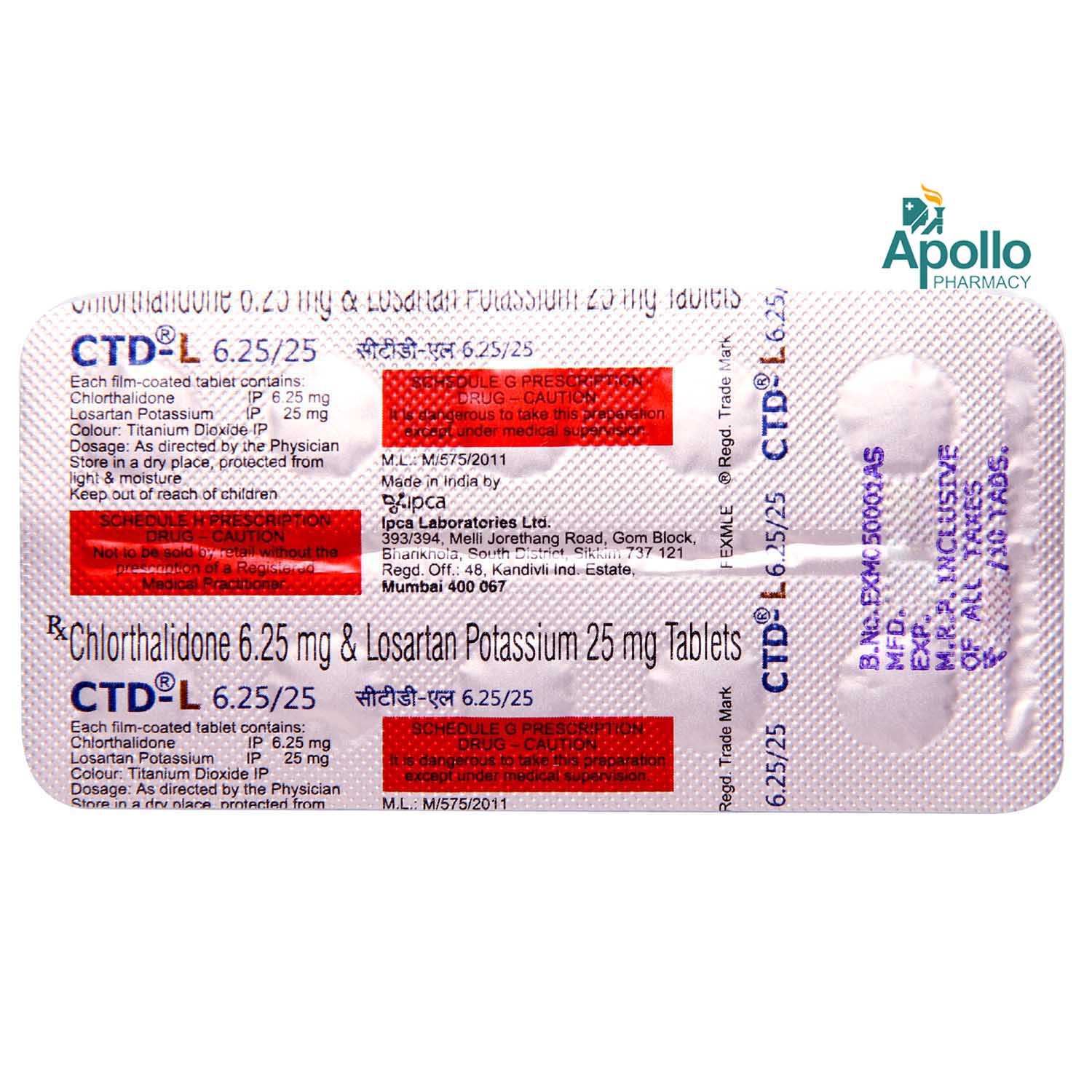
MRP ₹118.5
(Inclusive of all Taxes)
₹17.8 Cashback (15%)
know your delivery time
Provide Delivery Location
Composition :
Manufacturer/Marketer :
Consume Type :
Expires on or after :
Return Policy :

Secure Payment

Trusted by 8 Crore Indians

Genuine Products
Therapeutic Class
Country of origin
Manufacturer/Marketer address
Author Details
We provide you with authentic, trustworthy and relevant information
Disclaimer
Alcohol
Safe if prescribed
It is unsafe to consume alcohol, since alcohol consumption with CTD-L Tablet may increase the risk of low blood pressure and cause adverse effects, such as dizziness, fainting, light-headedness, or headache.
Pregnancy
Consult your doctor
CTD-L Tablet is not recommended during pregnancy since it may affect and harm the baby. Consult your doctor before taking CTD-L Tablet if you plan to become pregnant or already pregnant. Your doctor will weigh the potential risks and benefits before prescribing CTD-L Tablet .
Breast Feeding
Consult your doctor
Chlorthalidone in CTD-L Tablet is not recommended during breastfeeding. Please consult your doctor before taking CTD-L Tablet if you are breastfeeding.
Driving
Safe if prescribed
CTD-L Tablet may cause side effects like dizziness or tiredness, which can affect your ability to concentrate and drive. Hence, it is recommended not to drive or operate machinery until you are mentally alert.
Liver
Consult your doctor
Let your doctor know if you have any history of liver diseases before taking CTD-L Tablet . The dosage will be initiated in lower doses and will be further adjusted in patients with liver diseases.
Kidney
Consult your doctor
CTD-L Tablet consists of Losartan drug, which may affect the kidney functioning. Hence it is advised to seek doctor advice before starting CTD-L Tablet if you have kidney problems.
Children
Safe if prescribed
Safety and efficacy of CTD-L Tablet have not been established in patients younger than 18 years.
Product Substitutes
About CTD-L Tablet
CTD-L Tablet belongs to the class of ‘anti-hypertensive drugs’ primarily used to treat high blood pressure (hypertension). Hypertension is a medical condition in which blood pressure is elevated persistently in the arteries. It is considered an essential risk factor for cardiovascular diseases like heart attack, stroke, myocardial infarction etc.
CTD-L Tablet consists of two medicines, namely: Losartan and Chlorthalidone. Losartan belongs to a group of angiotensin II receptor antagonists which narrows constricted blood vessels and widens it. Thus, it lowers elevated blood pressure and increases blood flow by preventing blood vessel narrowing. Chlorthalidone belongs to thiazide diuretics (water pill) which inhibits sodium and chloride reabsorption from absorbing excess salts that cause fluid retention or build-up. Thus, it also relaxes the blood vessels to improve blood circulation and lowers raised blood pressure.
Your doctor will decide the dosage of CTD-L Tablet based on your medical condition. In some cases, CTD-L Tablet can cause side effects like nausea, taste changes, stomach upset, diarrhoea, headache, weakness, dizziness and decreased blood pressure. Most of these side effects of CTD-L Tablet do not require medical attention and gradually resolve over time. However, if these side effects persist longer, please consult your doctor.
If you are known to be allergic to CTD-L Tablet or any other medicines, please inform your doctor. Before taking CTD-L Tablet , let your doctor know if you have any kidney, liver problems or severe dehydration. Pregnant and breastfeeding women should consult their doctor before taking CTD-L Tablet . Please do not stop taking CTD-L Tablet on your own, leading to the recurrence of symptoms or worsening the condition. Do not consume alcohol with CTD-L Tablet as it may increase the risk of low blood pressure. Avoid driving or operating machinery if you experience dizziness.
Uses of CTD-L Tablet
Medicinal Benefits Mweb
Key Benefits
CTD-L Tablet is an anti-hypertensive medication that treats high blood pressure (hypertension). It consists of Losartan and Chlorthalidone. Losartan is an angiotensin II receptor antagonist. It lowers the blood pressure and increases the blood flow by inhibiting angiotensin (a hormone that constricts blood vessels). Losartan is also used to treat stroke and slow down kidney damage in people with type 2 diabetes. It also increases urinary flow rate and aids in the excretion of electrolytes like chloride, magnesium, calcium and phosphate and by-products like uric acid. Chlorthalidone is a thiazide diuretic (water pill) with antihypertensive activity. It inhibits sodium and chloride reabsorption from absorbing excess salts that cause fluid retention or build-up. Chlorthalidone lowers blood pressure by decreasing the amount of blood the heart pumps (cardiac output) and reducing plasma and extracellular fluid volume (body fluids outside the cells).
Directions for Use
Side Effects of CTD-L Tablet
- Nausea
- Taste changes
- Stomach upset
- Diarrhoea
- Headache
- Weakness
- Dizziness
- Decreased blood pressure (hypotension)
Drug Warnings
Complete the course strictly as suggested by the doctor, even if you feel better, to avoid disease recurrence. Let your doctor know if you have any history of heart, kidney or liver diseases, severe dehydration, high potassium levels (hyperkalaemia), low potassium levels (hypokalaemia), diabetes, high cholesterol levels, electrolyte imbalance, asthma, lupus (an autoimmune disease), gout and thyroid disorders before starting CTD-L Tablet . Pregnant women should consult their doctor before taking CTD-L Tablet . Chlorthalidone in CTD-L Tablet passes into the breast milk during breastfeeding. Hence, it is advised to inform your doctor before using CTD-L Tablet if you are a nursing mother. Avoid operating any machines or doing any work that needs mental alertness if you feel dizzy after taking CTD-L Tablet . It is advised to avoid alcohol consumption while using CTD-L Tablet to prevent dizziness and risk of low blood pressure. CTD-L Tablet is not recommended for use in patients younger than 18 years of age.
Drug-Drug Interactions
Drug-Drug Interactions
Login/Sign Up
Co-administration of CTD-L Tablet and cisapride may increase the risk or severity of an irregular heart rhythm that may be serious.
How to manage the interaction:
Taking CTD-L Tablet with Cisapride is not recommended, please consult your doctor before taking it. Do not discontinue the medication without consulting a doctor.
Co-administration of Aminolevulinic acid and CTD-L Tablet may increase the risk of severe sunburn.
How to manage the interaction:
Taking CTD-L Tablet with Aminolevulinic acid together can possibly result in an interaction, but it can be taken if a doctor has advised it. If you notice that your skin is very sensitive to sunlight or if you have a really bad sunburn, it's important to contact your doctor right away. Do not discontinue any medications without consulting a doctor.
Taking Droperidol can make CTD-L Tablet less effective in lowering blood pressure.
How to manage the interaction:
Taking CTD-L Tablet with Droperidol together can possibly result in an interaction, but it can be taken if your doctor has advised it. If you have any of these symptoms, it's important to contact your doctor right away. These symptoms include an irregular heart rhythm, severe or long-lasting diarrhea or vomiting, complications, sudden dizziness or lightheadedness, fainting, difficulty breathing, heart palpitations, weakness, feeling sleepy or confused, muscle pain, and feeling nauseous or vomiting. Do not stop using any medications without first talking to your doctor.
Co-administration of CTD-L Tablet together with lithium can increase the effects of lithium.
How to manage the interaction:
Although there is a interaction between CTD-L Tablet and lithium, but it can be taken together if prescribed by a doctor. However, consult your doctor if you experience diarrhea, vomiting, drowsiness, shaking of hands and legs, thirst, increased urination, lack of coordination, or muscle weakness. Do not discontinue any medications without consulting a doctor.
Co-administration of Tizanidine and CTD-L Tablet may show additive effects and increase the risk of low blood pressure.
How to manage the interaction:
Although there is an interaction, CTD-L Tablet can be taken with tizanidine if prescribed by the doctor. If you experience headache, dizziness, palpitations, or sweating, contact your doctor immediately. Do not discontinue any medications without consulting a doctor.
Co-administration of CTD-L Tablet with ziprasidone can increase the risk of an irregular heart rhythm that may be serious.
How to manage the interaction:
Although there is an interaction, CTD-L Tablet can be taken with ziprasidone if prescribed by the doctor. but it can be taken together if prescribed by a doctor. However, consult your doctor if you experience sudden dizziness, lightheadedness, fainting, shortness of breath, weakness, tiredness, drowsiness, confusion, muscle pain, cramps, nausea, or vomiting. Do not discontinue any medications without consulting a doctor.
Co-administration of CTD-L Tablet with pimozide can increase the risk of an irregular heart rhythm that may be serious.
How to manage the interaction:
Although there is an interaction, CTD-L Tablet can be taken with pimozide if prescribed by the doctor. Consult the prescriber if you develop sudden dizziness, lightheadedness, fainting, or fast or pounding heartbeats during treatment with pimozide. Also, let the doctor know if you experience signs of electrolyte disturbance, such as weakness, tiredness, drowsiness, confusion, muscle pain, cramps, dizziness, nausea, or vomiting. Do not discontinue any medications without consulting a doctor.
Coadministration of CTD-L Tablet with amiodarone may increase the risk of abnormal heart rhythms.
How to manage the interaction:
Although taking CTD-L Tablet with amiodarone may cause an interaction, it is safe to do so if your doctor has prescribed it. If you have a cardiac problem or electrolyte imbalances, you may be more vulnerable. If you develop sudden dizziness, lightheadedness, fainting, shortness of breath, or a rapid heartbeat, consult a doctor. Do not stop taking any medications without visiting a doctor.
Taking CTD-L Tablet can make the body eliminate Arsenic trioxide faster, leading to lower levels in the blood and potentially reducing its effectiveness.
How to manage the interaction:
Co-administration of CTD-L Tablet with Arsenic trioxide can possibly result in an interaction, but it can be taken if a doctor has advised it. If you have any of these symptoms, it's important to contact a doctor right away: your heart beating irregularly, feeling dizzy or lightheaded, fainting, having a fast or pounding heartbeat, feeling weak or drowsy, being confused, experiencing muscle pain, or feeling nauseous or vomiting. Do not discontinue any medications without consulting a doctor.
Coadministration of CTD-L Tablet with Spironolactone can increase potassium levels in blood which can lead to severe conditions like kidney problems and irregular heart rhythm.
How to manage the interaction:
Taking CTD-L Tablet with Spironolactone is not recommended as it can possibly result in an interaction, it can be taken if your doctor has advised it. However, consult the doctor if you experience nausea, vomiting, weakness, confusion, tingling in your hands and feet, feeling of heaviness in your legs, a weak pulse, or a slow or irregular heartbeat. It is important to maintain proper fluid intake while taking these medications. Do not stop taking any medication without doctor's advise.
Drug-Food Interactions
Drug-Food Interactions
Login/Sign Up
Drug-Diseases Interactions
Drug-Diseases Interactions
Login/Sign Up
Drug-Drug Interactions Checker List
- LISINOPRIL
- BENAZEPRIL
- ALISKIREN
- IBUPROFEN
- NAPROXEN
- DOFETILIDE
- DROSPIRENONE
- CISAPRIDE
- LITHIUM
Habit Forming
Special Advise
- Keep a check on your daily blood pressure, and if you notice any fluctuations, please consult a doctor. Low salt/sodium diet and regular exercise are recommended along with CTD-L Tablet for effective results.
- Thiazide diuretics like Chlorthalidone may increase serum triglyceride and cholesterol levels. Hence it is advised to monitor your cholesterol levels regularly.
- Chlorthalidone in CTD-L Tablet may interfere with specific lab tests like parathyroid test and protein-bound iodide test, hence mention that you are using CTD-L Tablet in advance to the laboratory staff.
- Your doctor may advise you to get a regular kidney function test, blood examinations for potassium levels and other electrolytes while using CTD-L Tablet to rule out any renal impairment.
- Regular monitoring of blood glucose levels is advised in diabetic patients while using CTD-L Tablet .
Diet & Lifestyle Advise
- Keep your weight under control with body mass index (BMI) between 19.5 and 24.9.
- Do regular physical activity or exercise for at least 150 minutes per week, or about 30 minutes most days of the week. Doing this can help you to lower your raised blood pressure by about 5 mm of Hg.
- Limit sodium chloride intake (table salt) in your daily diet to 2300 mg per day or less than 1500 mg is ideal for most adults.
- If you are taking alcohol, use only one serving for women and two servings for men.
- Quit smoking to lower the risk of heart diseases.
- Avoid chronic stress as it can raise your blood pressure. Try to enjoy and spent time with your loved ones to cope with stress.
- Monitor your blood pressure daily, and if you notice any fluctuations frequently, please contact your doctor immediately.
- Try including heart-healthy omega 3 fatty acid-containing foods in your daily diet. You can also use low-fat cooking oils like olive oil, soybean oil, canola oil, and coconut oil to lower your elevated blood pressure.
All Substitutes & Brand Comparisons
RX
Losanorm-CH 25 mg/6.25 mg Tablet 10's
Ipca Laboratories Ltd
₹102.5
(₹9.23 per unit)
13% CHEAPER

Have a query?
Buy best Cardiology products by
Torrent Pharmaceuticals Ltd
Sun Pharmaceutical Industries Ltd
Lupin Ltd
Intas Pharmaceuticals Ltd
Cipla Ltd
Micro Labs Ltd
Macleods Pharmaceuticals Ltd
Abbott India Ltd
Ajanta Pharma Ltd
Ipca Laboratories Ltd
Eris Life Sciences Ltd
Mankind Pharma Pvt Ltd
Lloyd Healthcare Pvt Ltd
Dr Reddy's Laboratories Ltd
Glenmark Pharmaceuticals Ltd
Emcure Pharmaceuticals Ltd
Alembic Pharmaceuticals Ltd
Alkem Laboratories Ltd
East West Pharma India Pvt Ltd
USV Pvt Ltd
Zydus Healthcare Ltd
Aristo Pharmaceuticals Pvt Ltd
Elbrit Life Sciences Pvt Ltd
J B Chemicals & Pharmaceuticals Ltd
Zydus Cadila
Akumentis Healthcare Ltd
Alteus Biogenics Pvt Ltd
Hbc Life Sciences Pvt Ltd
Fusion Health Care Pvt Ltd
Troikaa Pharmaceuticals Ltd
La Renon Healthcare Pvt Ltd
Corona Remedies Pvt Ltd
Jubilant Lifesciences Ltd
Medley Pharmaceuticals Ltd
Knoll Healthcare Pvt Ltd
Msn Laboratories Pvt Ltd
Zuventus Healthcare Ltd
Cadila Pharmaceuticals Ltd
Blue Cross Laboratories Pvt Ltd
Lividus Pharmaceuticals Pvt Ltd
Morepen Laboratories Ltd
Ranmarc Labs
Shrrishti Health Care Products Pvt Ltd
Sanofi India Ltd
Steris Healthcare
Elder Pharmaceuticals Ltd
Primus Remedies Pvt Ltd
Unison Pharmaceuticals Pvt Ltd
Eswar Therapeutics Pvt Ltd
Knoll Pharmaceuticals Ltd
Tas Med India Pvt Ltd
Systopic Laboratories Pvt Ltd
Indiabulls Pharmaceuticals Pvt Ltd
Leeford Healthcare Ltd
Sinsan Pharmaceuticals Pvt Ltd
Biochem Pharmaceutical Industries Ltd
Cadila Healthcare Ltd
Azkka Pharmaceuticals Pvt Ltd
Nirvana India Pvt Ltd
Orsim Pharma
Prevego Healthcare & Research Pvt Ltd
Econ Healthcare
Elinor Pharmaceuticals (P) Ltd
FDC Ltd
Sunij Pharma Pvt Ltd
Nicholas Piramal India Ltd
Astra Zeneca Pharma India Ltd
Pfizer Ltd
Lia Life Sciences Pvt Ltd
Shine Pharmaceuticals Ltd
Elicad Pharmaceuticals Pvt Ltd
Indoco Remedies Ltd
Proqol Health Care Pvt Ltd
Vasu Organics Pvt Ltd
Biocon Ltd
Opsis Care Lifesciences Pvt Ltd
Johnlee Pharmaceuticals Pvt Ltd
Merck Ltd
Wockhardt Ltd
Auspharma Pvt Ltd
Ergos Life Sciences Pvt Ltd
Lakshya Life Sciences Pvt Ltd
Ordain Health Care Global Pvt Ltd
Pficus De Med Pvt Ltd
ALICAN PHARMACEUTICAL PVT LTD
RPG Life Sciences Ltd
Glynis Pharmaceuticals Pvt Ltd
Orris Pharmaceuticals
Samarth Life Sciences Pvt Ltd
Aprica Pharmaceuticals Pvt Ltd
Aretaeus Pharmaceuticals Pvt Ltd
Koye Pharmaceuticals Pvt Ltd
Neocardiab Care
Retra Life Science Pvt Ltd
Alniche Life Sciences Pvt Ltd
Alvio Pharmaceuticals Pvt Ltd
Arkas Pharma Pvt Ltd
Atos Lifesciences Pvt Ltd
Divine Savior Pvt Ltd
Metalis Lifesciences Pvt Ltd
Customers Also Bought


